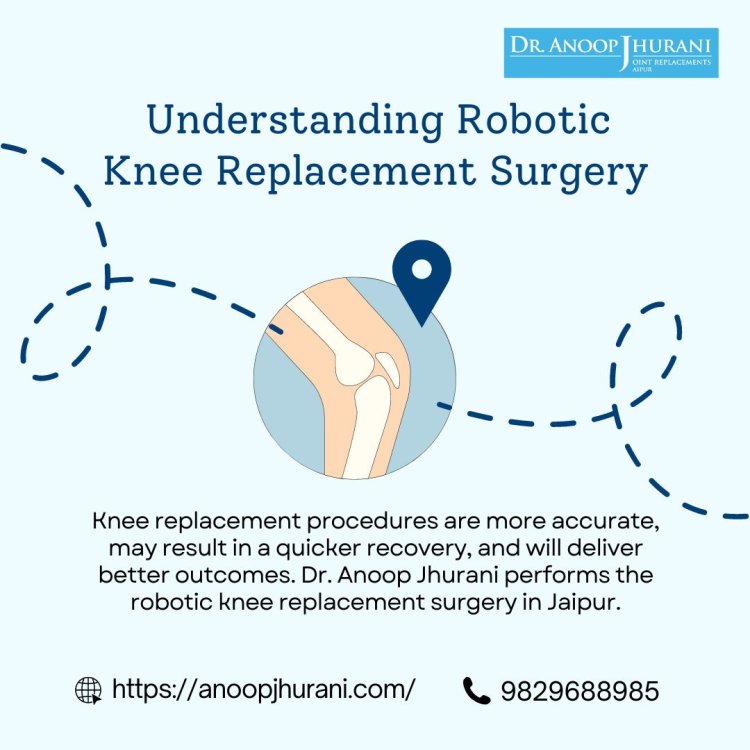Understanding Robotic Knee Replacement Surgery
Dr. Anoop Jhurani is one of the knee & hip replacement doctors in Jaipur. He has performed over 12,000 successful knee and hip surgeries.
Share this Post to earn Money ( Upto ₹100 per 1000 Views )

Knee replacement surgery has evolved significantly over the years, offering patients advanced treatment options to address debilitating knee pain and improve quality of life. Among these options, robotic knee replacement surgery has emerged as a precise and effective technique for restoring knee function and mobility. How robotic knee replacement surgery is performed and different types of knee replacement procedures available.
Robotic Knee Replacement Surgery: Robotic knee replacement surgery harnesses the power of advanced computer software and robotics technology to enhance the accuracy and precision of the procedure. Here's an overview of how robotic knee replacement surgery is performed:
1. Advanced Computer Software: Before the surgery, detailed images of the patient's knee are obtained using advanced imaging technology. These images are then processed by computer software, which generates a three-dimensional model of the knee joint.
2. Robotics-Assisted Arm: During the surgery, the surgeon utilizes a robotics-assisted arm, which is guided by computer software. The boundaries of the robotics-assisted arm are determined using patient-specific data, allowing the surgeon to balance and position the joint components precisely.
3. Precise Component Placement: With the guidance of the robotics-assisted arm, the surgeon accurately removes damaged tissue and aligns the implant components to ensure optimal function and stability of the knee joint.
4. Minimal Tissue Disruption: Robotic knee replacement surgery typically involves smaller incisions and less tissue disruption compared to traditional knee replacement techniques. This results in faster recovery times and reduced post-operative pain for patients.
Choosing the Best Type of Knee Replacement: When considering knee replacement surgery, it's essential to understand the different types of procedures available and choose the option that best suits your needs. Here are the main types of knee replacement procedures:
1. Total Knee Replacement: In total knee replacement surgery, the surgeon replaces the surfaces of the thigh and shin bones at the knee joint. This procedure is recommended for patients with widespread arthritis affecting the entire knee joint.
2. Partial Knee Replacement: Partial knee replacement may be an option for patients with strong knee ligaments and arthritis affecting only one side of the knee joint. This procedure preserves healthy tissue and may result in faster recovery times.
3. Revision Knee Replacement: Revision knee replacement is performed for patients who have previously undergone knee replacement surgery and require additional treatment due to implant failure, infection, or other complications.
Conclusion:
Robotic knee replacement surgery offers patients a precise and effective treatment option for addressing knee pain and dysfunction. By understanding how robotic knee replacement surgery is performed and the different types of knee replacement procedures available, patients can make informed decisions about their treatment and embark on the path to improved knee health and mobility. If you're considering knee replacement surgery, consult with a qualified orthopedic surgeon like Dr. Anoop Jhurani to explore your options and determine the best course of action for your individual needs.
















